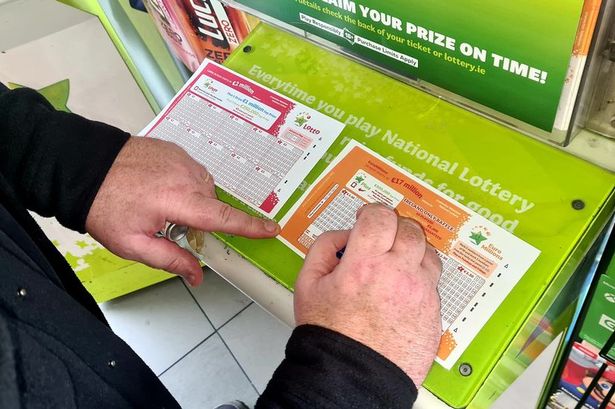Surviving A Flash Flood Emergency: A Practical Guide

Table of Contents
Recognizing the Signs of an Impending Flash Flood
Understanding the precursors to a flash flood is the first step in ensuring your safety. A proactive approach to flash flood risk assessment can significantly reduce your vulnerability.
Understanding Flash Flood Risk Factors:
Flash floods are not random occurrences; several factors increase the likelihood of one happening in your area. It's essential to understand these risk factors to better prepare yourself.
- Geographical Location: Living near mountains, canyons, dry washes, or areas with steep slopes significantly increases your flash flood risk. These geographical features can channel water rapidly, leading to sudden and intense flooding.
- Recent Heavy Rainfall or Thunderstorms: Intense rainfall, especially over a short period, is the primary trigger for flash floods. Pay close attention to weather forecasts and alerts, especially during periods of heavy precipitation.
- Flash Flood Warnings Issued by Local Authorities: Heed weather alerts, sirens, and official warnings issued by local authorities, the National Weather Service, or emergency management agencies. These are your critical indicators of imminent danger. Understanding and responding promptly to flash flood warnings is paramount.
- Rapidly Rising Water Levels in Streams or Rivers: Observe water levels in nearby bodies of water. A rapid and significant increase in water level is a clear warning sign that a flash flood might be imminent.
Observing Warning Signs:
Even without official warnings, several visual cues can signal an impending flash flood. Learning to recognize these signs is critical for effective flash flood preparedness.
- Sudden Increase in Water Flow: A dramatic increase in the speed and volume of water in streams, rivers, or normally dry areas is a strong indication of an impending flash flood.
- Debris Flowing in Normally Dry Areas: If you see debris, such as branches, logs, or other materials, being carried along in areas that are usually dry, it's a clear sign of rapidly rising water.
- Unusual Sounds of Rushing Water: A noticeable increase in the roar or rushing sound of water, even from a distance, can be a prelude to a flash flood.
- Changes in Water Color or Appearance: A significant change in the color or clarity of water, indicating sediment and debris being carried by the current, can be a warning sign.
Emergency Preparedness Before a Flash Flood
Proactive planning is key to surviving a flash flood. Developing a comprehensive flash flood preparedness plan and securing your property are essential steps.
Creating a Family Emergency Plan:
A well-defined family emergency plan ensures everyone knows what to do during a flash flood.
- Establish a Meeting Point: Designate a safe meeting point outside the flood zone where family members can gather after evacuating.
- Designate an Out-of-State Contact Person: Choose a person outside the affected area to serve as a central contact point for family members to check in.
- Pack an Emergency Kit: Prepare a comprehensive emergency kit including water, non-perishable food, first-aid supplies, essential medications, flashlights, batteries, and important documents. This flash flood preparedness kit should be readily accessible.
- Identify Evacuation Routes: Know multiple evacuation routes and plan alternate escape routes in case primary roads are flooded.
Securing Your Property:
Protecting your property before a flash flood can mitigate damage and ensure your safety.
- Move Valuable Items: Move valuables to upper floors or elevated, safe locations.
- Unplug Electrical Appliances: Disconnect electrical appliances to prevent electrical hazards.
- Secure Outdoor Furniture and Loose Objects: Secure any loose objects that could be swept away by floodwaters, preventing damage and potential hazards.
- Consider Sandbagging (if time permits): If you have time before the flood hits, sandbagging can help protect your property from inundation.
Actions to Take During a Flash Flood
During a flash flood, swift and decisive action is critical for survival.
Immediate Actions:
The most important thing is to get to safety immediately.
- Move to Higher Ground Immediately: This is your top priority. Head for higher ground as quickly and safely as possible.
- Avoid Walking or Driving Through Floodwaters: Never attempt to walk or drive through floodwaters. The depth and current can be deceiving and extremely dangerous. "Turn around, don't drown" is a crucial life-saving mantra.
- Turn Around, Don't Drown: This is not just a slogan; it’s a life-saving directive. Floodwaters can be deceptively deep and fast-moving.
- Do Not Touch Downed Power Lines: Downed power lines pose a significant electrical hazard. Stay away from them.
If Trapped:
If you become trapped by a flash flood, remain calm and take the following steps:
- Seek Refuge on the Roof of Your Vehicle (if safe): If you are trapped in your vehicle and it's safe to do so, climb onto the roof.
- Climb to Higher Ground if Possible: If you can safely reach higher ground, do so immediately.
- Call Emergency Services: Call emergency services for help as soon as possible.
- Signal for Help: If possible, signal for help using a bright cloth or mirror.
Post-Flash Flood Actions and Recovery
After a flash flood, safety remains paramount while you begin the long process of recovery.
Assessing the Damage:
Following a flash flood, take precautions while you assess the extent of the damage.
- Check for Injuries: Check for injuries to yourself and others. Administer first aid as needed.
- Inspect Your Property for Structural Damage: Inspect your property for structural damage and ensure it's safe before entering.
- Avoid Damaged Areas Until Deemed Safe: Avoid damaged areas until authorities declare them safe.
- Report Damages to Local Authorities: Report damages to your local authorities and insurance company.
Safely Cleaning Up After a Flash Flood:
Cleaning up after a flash flood requires caution to avoid further risks.
- Wear Protective Gear: Wear protective gear, including gloves, boots, and eye protection, to avoid hazards.
- Be Aware of Potential Hazards: Be aware of potential hazards such as electrical dangers and contaminated water.
- Dispose of Debris Properly: Dispose of debris properly according to local regulations.
- Contact Your Insurance Company: Contact your insurance company to report losses and initiate the claims process.
Conclusion
Surviving a flash flood emergency requires preparedness, quick thinking, and a clear understanding of the risks involved. By following the guidelines outlined in this practical guide, you can significantly increase your chances of safety during and after a flash flood. Remember, early warning systems and proactive preparations are key to mitigating the dangers of a flash flood. Stay informed about potential flash flood threats in your area and develop your own comprehensive flash flood preparedness plan today. Don't wait until it's too late; learn how to survive a flash flood emergency and protect yourself and your loved ones. Develop your flash flood survival plan now. Your life may depend on it.

Featured Posts
-
 La Primera Comunion De Los Gemelos Del Principe Alberto De Monaco
May 26, 2025
La Primera Comunion De Los Gemelos Del Principe Alberto De Monaco
May 26, 2025 -
 Proces Marine Le Pen L Appel Contre La Peine De Prison Et D Ineligibilite
May 26, 2025
Proces Marine Le Pen L Appel Contre La Peine De Prison Et D Ineligibilite
May 26, 2025 -
 Masa Israel Journey Largest English Yom Ha Zikaron Ceremony In History
May 26, 2025
Masa Israel Journey Largest English Yom Ha Zikaron Ceremony In History
May 26, 2025 -
 Massive Rubber Duck A Symbolic Visit To Myrtle Beach
May 26, 2025
Massive Rubber Duck A Symbolic Visit To Myrtle Beach
May 26, 2025 -
 Jenson And The Fw 22 Extended Collection Details And Analysis
May 26, 2025
Jenson And The Fw 22 Extended Collection Details And Analysis
May 26, 2025
Latest Posts
-
 Winning Euro Millions Ticket Traced To Irish Shop Claim Your Prize
May 28, 2025
Winning Euro Millions Ticket Traced To Irish Shop Claim Your Prize
May 28, 2025 -
 Check Euro Millions Results 34m Draw On Tuesday April 15th
May 28, 2025
Check Euro Millions Results 34m Draw On Tuesday April 15th
May 28, 2025 -
 Irish Euro Millions Ticket Holder Urged To Come Forward
May 28, 2025
Irish Euro Millions Ticket Holder Urged To Come Forward
May 28, 2025 -
 Euro Millions Winner Ticket Sold In Irish Shop Urgent Appeal
May 28, 2025
Euro Millions Winner Ticket Sold In Irish Shop Urgent Appeal
May 28, 2025 -
 Euro Millions Results Tuesday 15th April 34 Million Jackpot
May 28, 2025
Euro Millions Results Tuesday 15th April 34 Million Jackpot
May 28, 2025
